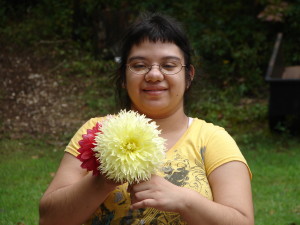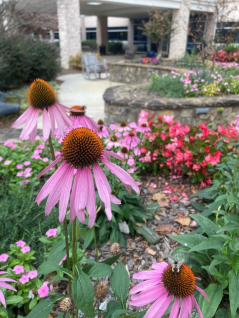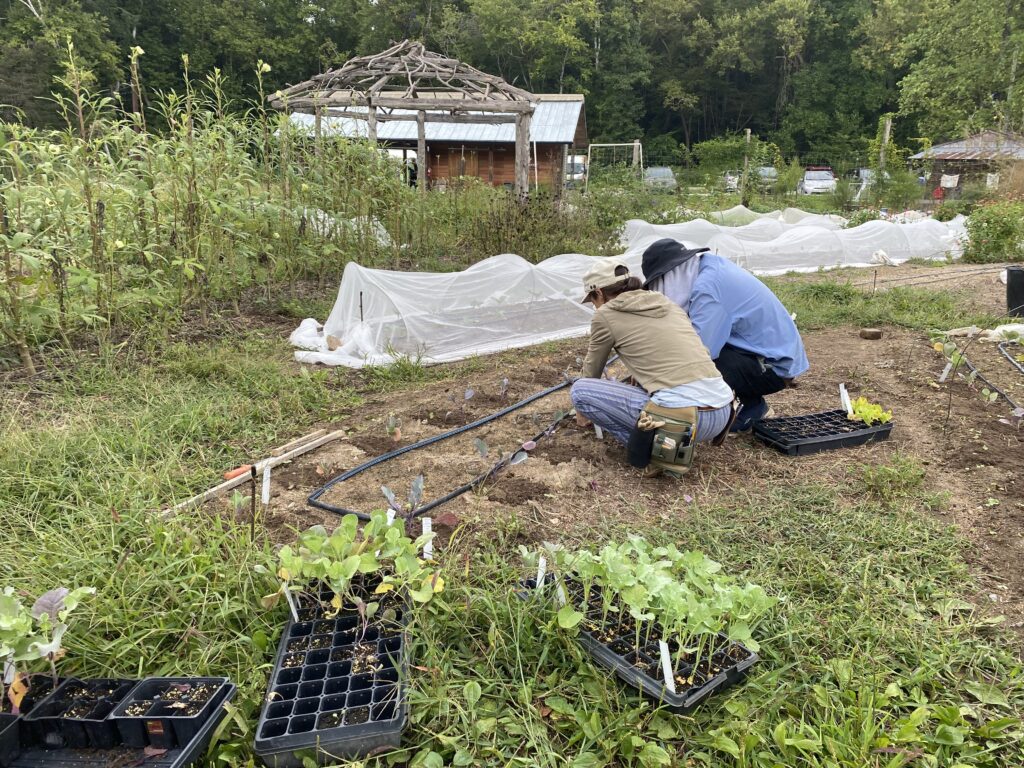North Carolina Therapeutic Horticulture Programs
go.ncsu.edu/readext?235134
en Español / em Português
El inglés es el idioma de control de esta página. En la medida en que haya algún conflicto entre la traducción al inglés y la traducción, el inglés prevalece.
Al hacer clic en el enlace de traducción se activa un servicio de traducción gratuito para convertir la página al español. Al igual que con cualquier traducción por Internet, la conversión no es sensible al contexto y puede que no traduzca el texto en su significado original. NC State Extension no garantiza la exactitud del texto traducido. Por favor, tenga en cuenta que algunas aplicaciones y/o servicios pueden no funcionar como se espera cuando se traducen.
Português
Inglês é o idioma de controle desta página. Na medida que haja algum conflito entre o texto original em Inglês e a tradução, o Inglês prevalece.
Ao clicar no link de tradução, um serviço gratuito de tradução será ativado para converter a página para o Português. Como em qualquer tradução pela internet, a conversão não é sensivel ao contexto e pode não ocorrer a tradução para o significado orginal. O serviço de Extensão da Carolina do Norte (NC State Extension) não garante a exatidão do texto traduzido. Por favor, observe que algumas funções ou serviços podem não funcionar como esperado após a tradução.
English
English is the controlling language of this page. To the extent there is any conflict between the English text and the translation, English controls.
Clicking on the translation link activates a free translation service to convert the page to Spanish. As with any Internet translation, the conversion is not context-sensitive and may not translate the text to its original meaning. NC State Extension does not guarantee the accuracy of the translated text. Please note that some applications and/or services may not function as expected when translated.
Collapse ▲
Image by John Murphy
Therapeutic Horticulture in North Carolina
North Carolina has long been at the forefront of therapeutic horticulture programs, professional education, healing and therapeutic gardens, and adapted ability garden programs. For the purposes of this article, we will refer to all of the following types of gardens in general as Therapeutic Gardens, but there are a few differences to keep in mind. Read on to learn about these different programs in our state*:
Types of Gardens:
Therapeutic Gardens
A therapeutic garden is designed for use as a component of a treatment program such as occupational therapy, physical therapy, or horticultural therapy/therapeutic horticulture programs and can be considered as a subcategory of a healing garden. Therapeutic gardens are designed as part of a multi-disciplinary collaborative process by a team of professionals to meet the treatment goals of a specific diagnosis or population. It may provide for both horticultural and non-horticultural activities. A therapeutic garden may exist on its own as an extension of an indoor therapeutic program area or it may be part of a larger healing garden. These gardens sometimes look “unfinished” because they are the site of many ongoing therapeutic and learning activities.
Healing Gardens
Healing gardens include green plants, flowers, water, and other aspects of nature, often with an intentional selection of sensory elements for grounding the visitor through sight, hearing, touch, smell, and taste. These gardens are often associated with hospitals and other short- and long-term healthcare settings, are accessible to all, and are designed to have beneficial effects on most users. A healing garden is designed as a retreat and a place of respite for clients, visitors, and staff to be used at their desire. An individual healing garden may include therapeutic gardens, horticultural therapy gardens, and/or restorative gardens. These gardens are typically aesthetically pleasing, with detailed plans of care and upkeep so that they can deliver the benefits to all who visit.
Horticultural Therapy Gardens
A horticultural therapy garden is a type of therapeutic garden; it is designed to accommodate client treatment goals, but it is designed to support primarily horticultural activities. A horticultural therapy garden is also designed in such a manner that the clients themselves are able to take care of plant material in the garden. These gardens often have the “experimental” look similar to therapeutic gardens.
Restorative Gardens
A restoration or meditation garden may be a public or private garden that is not necessarily associated with a healthcare setting. This type of garden employs the restorative value of nature to provide an environment conducive to mental repose, stress reduction, emotional recovery, and the enhancement of mental and physical energy. The design of a restorative garden focuses on the psychological, physical, and social needs of the users.
* This information was adapted from the American Horticultural Therapy Association
Types of Programs:
Therapeutic
The therapeutic program type is goal-focused, and is often found in hospitals, mental health settings, rehabilitation settings, and long-term care facilities. Therapeutic programs use plants and plant-related activities to improve human well-being. Similar to horticulture therapy but with group rather than individual goals, the focus is on improvement or recovery, and participants can benefit from active or passive participation.
Social
Social or Community therapeutic horticulture is a recreational activity related to plants and gardening. Treatment goals are very general, and the focus is on social interaction and horticulture activities. A typical community garden or garden club is a good example of a social horticulture setting, and a typical goal is to improve wellness and quality of life.
Vocational
Vocational therapeutic horticulture programs provide training that enables individuals to work in the horticulture industry professionally, which is the treatment goal for vocational participants. These programs often focus on rehabilitation from trauma, incarceration, and/or substance use; some also prepare people with different abilities to work in a horticulture setting with support. For this reason, vocational therapeutic horticulture programs may be found in schools, residential facilities, rehabilitation facilities, or prisons.
Therapeutic Gardens and Programs in North Carolina
Orange County
NC Botanical Gardens Horticultural Therapy Demonstration Gardens – Five 4-foot by 4-foot, 24-inch-high raised beds of heirloom vegetables and flowers designed for persons with limited mobility and reach. The garden provides sensory stimulation and seasonal interest, outdoor rooms and spaces for privacy and social interaction, safe and stable surfaces, raised beds, shade and seating, playful areas, and natural distractions that elicit emotional responses, including, moving water, art, and animals. The Herb House and the Growing Classroom provide space for indoor activity, and numerous onsite gardens and nature trails contribute additional plant collections for use by the horticultural therapy program.
Transplanting Traditions, Chapel Hill, NC – This community farm supports food sovereignty and provides agricultural and entrepreneurial education to limited resource refugee farmers at its four-acre incubator site.
Chatham County
Farm at Penny Lane, Chapel Hill, NC – Through the University of North Carolina at Chapel Hill’s Community Mental Health services, this 40-acre farm in northern Chatham County welcomes people with severe and persistent mental illness to join the group of participants, volunteers, and staff in growing fresh food, tending chickens, keeping bees, and learning healthy cooking skills together. The Farm is also a place for recovery and rehabilitation activities, and is served by a professional horticultural therapist with the NC Botanical Garden.
Henderson County
Bullington Gardens, Hendersonville, NC – 12 acres of rolling land, including a therapy garden with raised, accessible beds, an accessible greenhouse, pavilion, water feature, shade garden, perennial borders, native woodland garden, pumpkin patch, and herb garden. There is a half-mile nature trail through the wooded area of the grounds. Plants for fragrance and touch are included throughout the property. The facilities at the Gardens include a multipurpose room, a greenhouse and headhouse (used for hands-on workshops), and an amphitheater.
New Hanover County
The Ability Garden, Wilmington, NC – Offers free access to raised beds, adaptive equipment, a wide variety of garden containers including “vertical garden boxes”, barrier-free space, and an outdoor classroom. Guided classes and programs in this space focus on specific special needs populations.
Cumberland County
Cape Fear Botanical Garden, Fayetteville, NC – 80 acres close to downtown Fayetteville offers educational programs, tours for people with different abilities through “A Garden for All” program, and ongoing partnerships with the Wounded Warrior Project and Soldiers to Agriculture, offering a vocational model of therapeutic horticulture by developing skills that can translate into civilian work opportunities. Their produce supports Second Harvest Food Bank of Cumberland County.
Is your therapeutic garden missing from this list? Please email Amy Bruzzichesi at afbruzzi.ncsu.edu with information to be added to this page.




